Wind Turbines Fault Classification Treatment Method
Abstract
:1. Introduction
2. Related Work
3. Dynamic Weighted K-Means Clustering Method
3.1. Principle of Weighted K-Means Algorithm
3.2. Weight Parameter Calculation of Fault Classification Model Based on K-Means Algorithm
3.3. Linear Approximate Constraint Approximation Optimization Algorithm
4. Establishment of Wind Turbine Fault Classification Model Based on Multiple Nonlinear Regression
4.1. Establishment of Fault Data–Time Series Attribute Matrix
4.2. Establishment of Fault Classification Model
4.3. Optimal Calculation of Weight Parameters of Fault Classification Model Based on K-Means Algorithm
4.4. Optimization of Weight Coefficient of Wind Farm Fault Classification Model
4.5. Performance Evaluation Indicator
5. Application of Weighted K-Means Algorithm in the Wind Turbine Fault Data
5.1. Current Fault Classification Treatment Mode of Wind Power Companies
5.2. Establishment of Wind Farm Fault Classification Model
5.3. Example Verification and Result Analysis
5.3.1. Subsubsection
5.3.2. Weighted Value Sample Training Set and Weighted Parameter Optimization Algorithm
5.4. Comparative Analysis of Algorithms
5.5. Fault Classification Calculation and Result Analysis Based on Actual Data
6. Conclusions
Author Contributions
Funding
Data Availability Statement
Conflicts of Interest
References
- Zhao, Z.-Y.; Chang, R.-D.; Chen, Y.-L. What hinder the further development of wind power in China?—A socio-technical barrier study. Energy Policy 2016, 88, 465–476. [Google Scholar] [CrossRef]
- Li, X.; Hubacek, K.; Siu, Y.L. Wind power in China–Dream or reality? Energy 2012, 37, 51–60. [Google Scholar] [CrossRef]
- IEC61400-1; Wind turbines—Part 1: Design requirements. IEC: Geneva, Switzerland, 2005.
- Li, L.; Ren, X.; Yang, Y.; Zhang, P.; Chen, X. Analysis and recommendations for onshore wind power policies in China. Renew. Sustain. Energy Rev. 2018, 82, 156–167. [Google Scholar] [CrossRef]
- Yang, Y.; Lu, H.; Tan, X.; Chai, H.K.; Wang, R.; Zhang, Y. Fundamental mode shape estimation and element stiffness evaluation of girder bridges by using passing tractor-trailers. Mech. Syst. Signal Process. 2021, 169, 108746. [Google Scholar] [CrossRef]
- Yang, Y.; Zhang, Y.; Tan, X. Review on Vibration-Based Structural Health Monitoring Techniques and Technical Codes. Symmetry 2021, 13, 1998. [Google Scholar] [CrossRef]
- Yang, Y.; Ling, Y.; Tan, X.K.; Wang, S.; Wang, R.Q. Damage Identification of Frame Structure Based on Approximate Metropolis–Hastings Algorithm and Probability Density Evolution Method. Int. J. Struct. Stab. Dyn. 2022. [Google Scholar] [CrossRef]
- Wan, Y.; Xiufang, P.; Jianfeng, L. Interactions of wind turbine-foundation-ground in mountain wind field by finite element method. Acta Energ. Sol. Sin. 2018, 39, 2060–2066. [Google Scholar]
- Ke, S.; Ge, Y.; Zhao, L.; Tamura, Y. A new methodology for analysis of equivalent static wind loads on super-large cooling towers. J. Wind Eng. Ind. Aerodyn. 2012, 111, 30–39. [Google Scholar] [CrossRef]
- Wei, Y. Research on Basic Mechanical Properties of Hybrid Wind Turbine Towers. Ph.D. Thesis, Fuzhou University, Fuzhou, China, 2016. [Google Scholar]
- Yang, Y.; Liu, J.; Fan, J. Buckling behavior of double-skin composite walls: An experimental and modeling study. J. Constr. Steel Res. 2016, 121, 126–135. [Google Scholar] [CrossRef] [Green Version]
- Nassar, S.A.; Ganganala, M. Effect of Separating Load Eccentricity on the Clamp Load Loss in a Bolted Joint Using a Strain Hardening Model. J. Press. Vessel Technol. 2011, 133, 21206. [Google Scholar] [CrossRef]
- Dao, P.B.; Staszewski, W.J.; Barszcz, T.; Uhl, T. Condition monitoring and fault detection in wind turbines based on cointegration analysis of SCADA data. Renew. Energy 2018, 116, 107–122. [Google Scholar] [CrossRef]
- Liu, X.; Lu, S.; Ren, Y.; Wu, Z. Wind Turbine Anomaly Detection Based on SCADA Data Mining. Electronics 2020, 9, 751. [Google Scholar] [CrossRef]
- Chou, J.-S.; Tu, W.-T. Failure analysis and risk management of a collapsed large wind turbine tower. Eng. Fail. Anal. 2011, 18, 295–313. [Google Scholar] [CrossRef]
- Qiu, Y.; Feng, Y.; Sun, J.; Zhang, W.; Infield, D. Applying thermophysics for wind turbine drivetrain fault diagnosis using SCADA data. IET Renew. Power Gener. 2016, 10, 661–668. [Google Scholar] [CrossRef] [Green Version]
- Zhao, Y.; Li, D.; Dong, A.; Kang, D.; Lv, Q.; Shang, L. Fault Prediction and Diagnosis of Wind Turbine Generators Using SCADA Data. Energies 2017, 10, 1210. [Google Scholar] [CrossRef] [Green Version]
- Gao, Z.; Liu, X. An Overview on Fault Diagnosis, Prognosis and Resilient Control for Wind Turbine Systems. Processes 2021, 9, 300. [Google Scholar] [CrossRef]
- Qi, J.; Yu, Y.; Wang, L.; Liu, J.; Wang, Y. An effective and efficient hierarchical K-means clustering algorithm. Int. J. Distrib. Sens. Networks 2017, 13, 1–17. [Google Scholar] [CrossRef] [Green Version]
- Yang, W.; Long, H.; Ma, L.; Sun, H. Research on Clustering Method Based on Weighted Distance Density and K-Means. Procedia Comput. Sci. 2020, 166, 507–511. [Google Scholar] [CrossRef]
- Pickens, A.; Sengupta, S. Benchmarking Studies Aimed at Clustering and Classification Tasks Using K-Means, Fuzzy C-Means and Evolutionary Neural Networks. Mach. Learn. Knowl. Extr. 2021, 3, 695–719. [Google Scholar] [CrossRef]
- Huang, X.; Yang, X.; Zhao, J.; Xiong, L.; Ye, Y. A new weighting k -means type clustering framework with an l2-norm regularization. Knowledge-Based Syst. 2018, 151, 165–179. [Google Scholar] [CrossRef]
- Chou, J.-S.; Ou, Y.-C.; Lin, K.-Y. Collapse mechanism and risk management of wind turbine tower in strong wind. J. Wind Eng. Ind. Aerodyn. 2019, 193, 103962. [Google Scholar] [CrossRef]
- Rezamand, M.; Kordestani, M.; Carriveau, R.; Ting, D.S.-K.; Saif, M. A New Hybrid Fault Detection Method for Wind Turbine Blades Using Recursive PCA and Wavelet-Based PDF. IEEE Sensors J. 2019, 20, 2023–2033. [Google Scholar] [CrossRef]
- Lin, Y.; Tu, L.; Liu, H.; Li, W. Fault analysis of wind turbines in China. Renew. Sustain. Energy Rev. 2016, 55, 482–490. [Google Scholar] [CrossRef]
- Zhao, D.; Hu, X.; Xiong, S.; Tian, J.; Xiang, J.; Zhou, J.; Li, H. k-means clustering and kNN classification based on negative databases. Appl. Soft Comput. 2021, 110, 107732. [Google Scholar] [CrossRef]
- Li, H.; Dfaz, H.; Soares, G.C. A failure analysis of floating offshore wind turbines using AHP-FMEA methodology. Ocean. Eng. 2021, 234, 109261. [Google Scholar] [CrossRef]
- Qiu, Y.; Feng, Y.; Tavner, P.; Richardson, P.; Erdős, F.G.; Chen, B. Wind turbine SCADA alarm analysis for improving reliability. Wind Energy 2012, 15, 951–966. [Google Scholar] [CrossRef]
- Qiu, Y.; Feng, Y.; Infield, D. Fault diagnosis of wind turbine with SCADA alarms based multidimensional information processing method. Renew. Energy 2019, 145, 1923–1931. [Google Scholar] [CrossRef]
- Gonzalez, E.; Reder, M.; Melero, J.J. SCADA alarms processing for wind turbine component failure detection. J. Phys. Conf. Ser. 2016, 753, 72019. [Google Scholar] [CrossRef]
- Castellani, F.; Garinei, A.; Terzi, L.; Astolfi, D.; Gaudiosi, M. Improving windfarm operation practice through numerical modelling and supervisory control and data acquisition data analysis. IET Renew. Power Gener. 2014, 8, 367–379. [Google Scholar] [CrossRef]
- Wei, L.; Qian, Z.; Pei, Y.; Wang, J. Wind Turbine Fault Diagnosis by the Approach of SCADA Alarms Analysis. Appl. Sci. 2021, 12, 69. [Google Scholar] [CrossRef]
- Yu, Y.; Velastin, S.A.; Yin, F. Automatic grading of apples based on multi-features and weighted K-means clustering algorithm. Inf. Processing Agric. 2020, 7, 556–565. [Google Scholar] [CrossRef]
- Wang, B.; Wang, G.; Wang, Y.; Lou, Z.; Hu, S.; Ye, Y. A K-means clustering method with feature learning for unbalanced vehicle fault diagnosis. Smart Resilient Transp. 2021, 3, 162–176. [Google Scholar] [CrossRef]
- Fang, R.; Shang, R.; Wu, M.; Peng, C.; Guo, X. Application of gray relational analysis to k-means clustering for dynamic equivalent modeling of wind farm. Int. J. Hydrogen Energy 2017, 42, 20154–20163. [Google Scholar] [CrossRef]
- Kun, H.; Ping, D.; Yuepeng, L. Structure optimization for erosion resistance of 90° elbow with gas-solid two-phase flow. J. Saf. Sci. Technol. 2019, 15, 94–100. [Google Scholar]
- Powell, M.J.D. A direct search optimization method that models the objective and constraint functions by linear interpolation. In Advances in Optimization and Numerical Analysis; Springer: Dordrecht, The Netherlands, 1994; pp. 51–67. [Google Scholar]
- Yang, Z. Automatic Condition Monitoring of Industrial Rolling-Element Bearings Using Motor’s Vibration and Current Analysis. Shock Vib. 2015, 2015, 486159. [Google Scholar] [CrossRef] [Green Version]
- Huang, L. Studies on Dynamics of Suction Piles during Their Lowering Operations. Master’s Thesis, Texas A & M University, College Station, TX, USA, 2010. [Google Scholar]
- Asian, S.; Ertek, G.; Haksoz, C.; Pakter, S.; Ulun, S. Wind Turbine Accidents: A Data Mining Study. IEEE Syst. J. 2016, 11, 1567–1578. [Google Scholar] [CrossRef] [Green Version]
- Guo, J.; Liu, C.; Cao, J.; Jiang, D. Damage identification of wind turbine blades with deep convolutional neural networks. Renew. Energy 2021, 174, 122–133. [Google Scholar] [CrossRef]
- Xiao, C.; Liu, Z.; Zhang, T.; Zhang, X. Deep Learning Method for Fault Detection of Wind Turbine Converter. Appl. Sci. 2021, 11, 1280. [Google Scholar] [CrossRef]
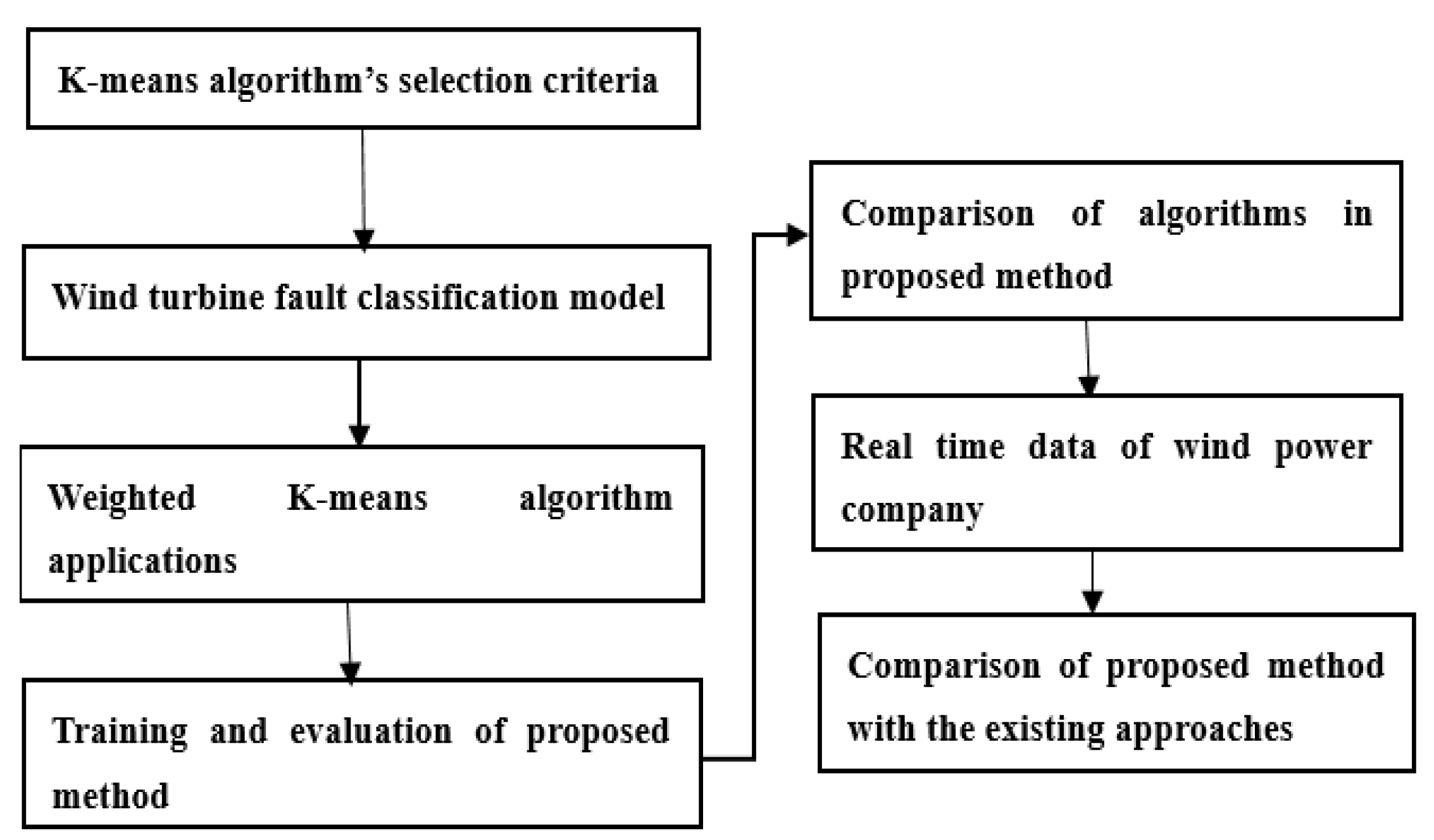
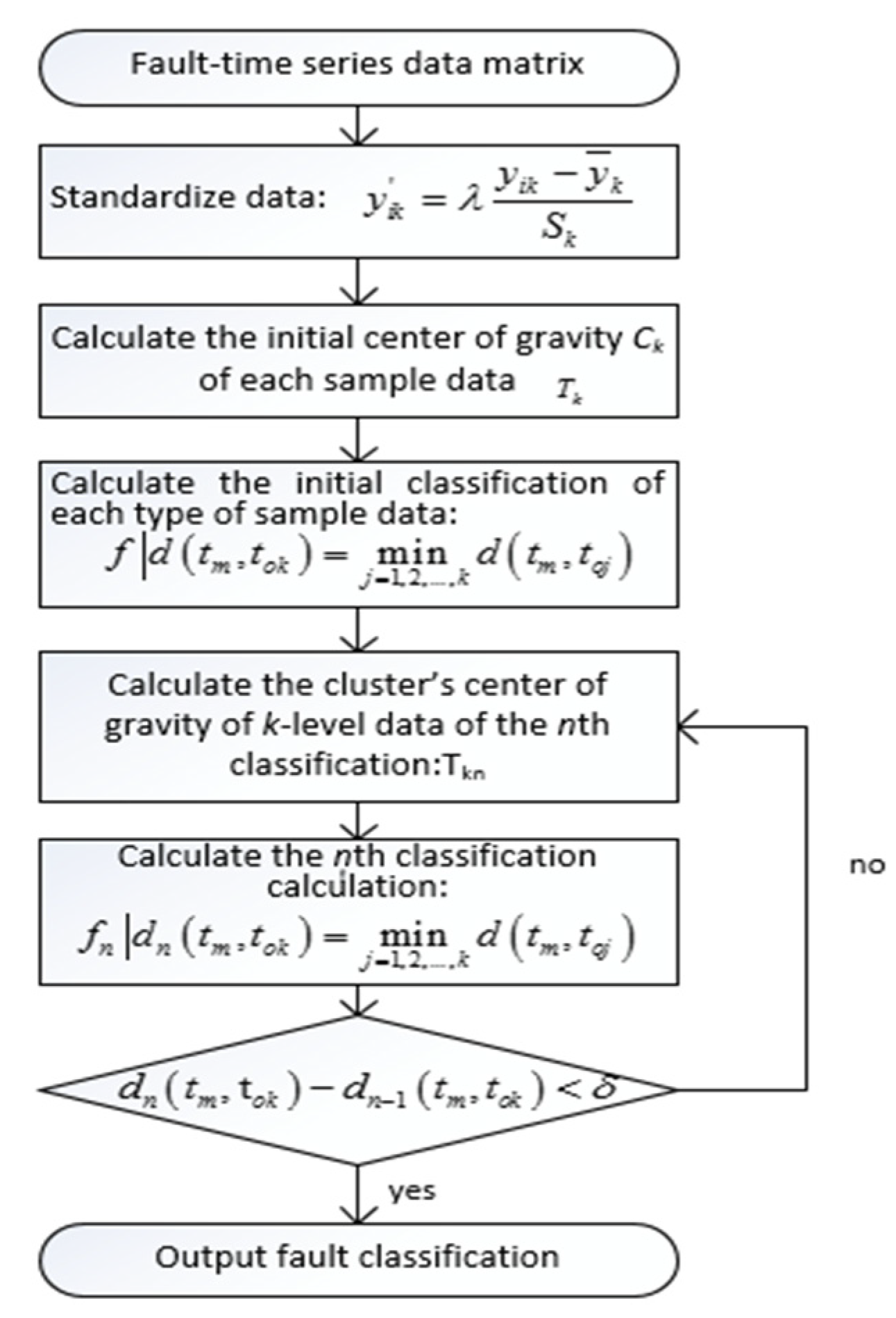
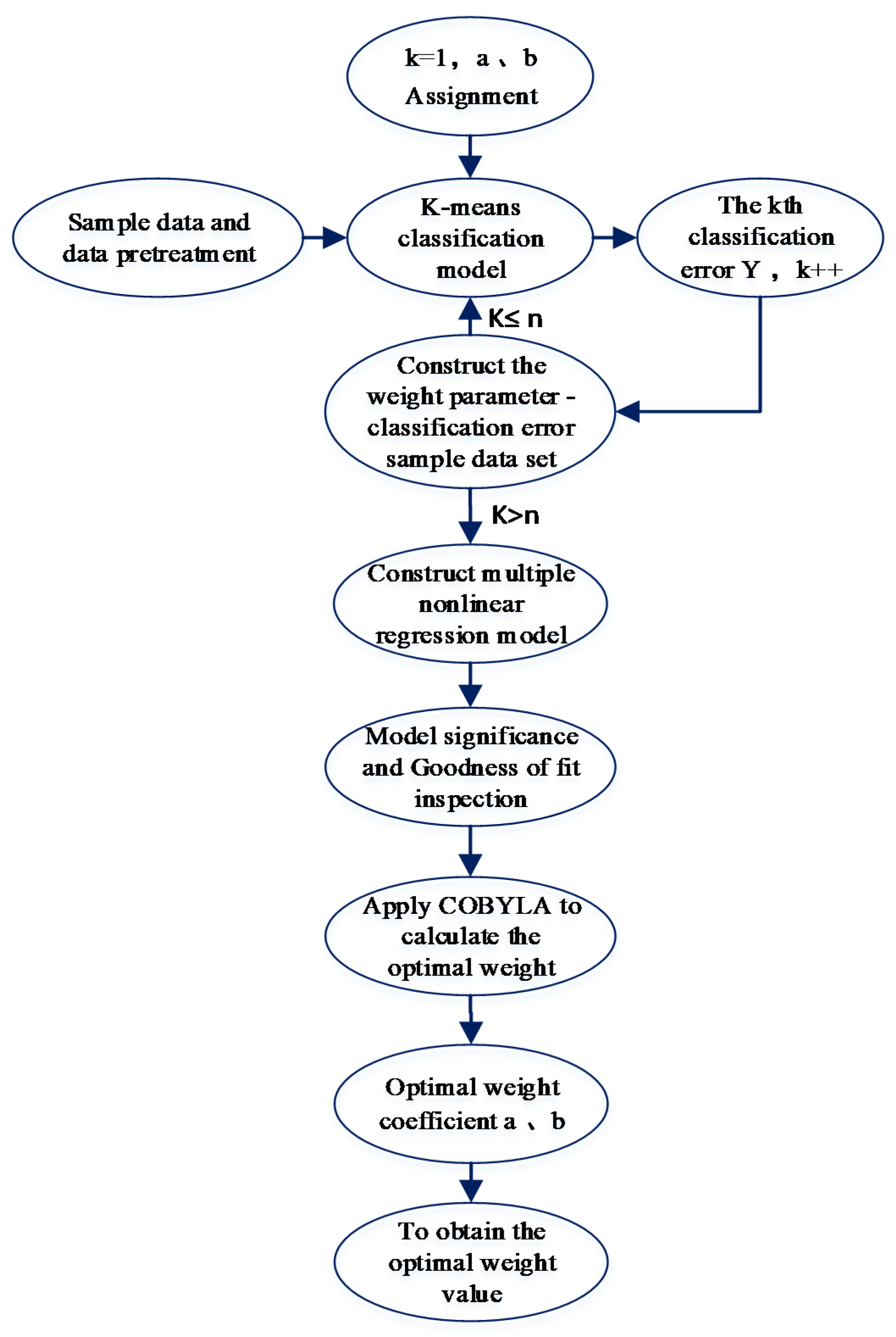

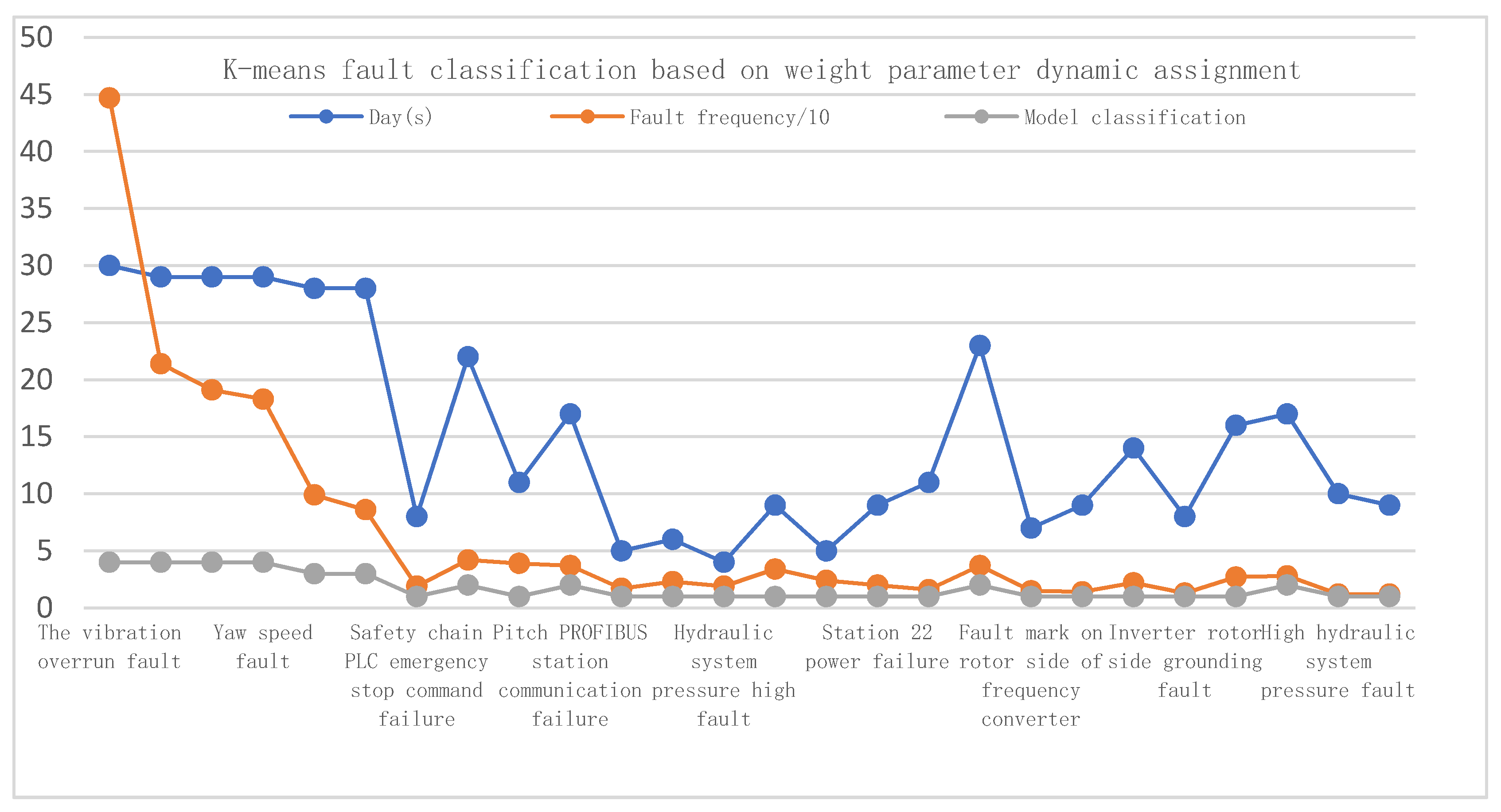
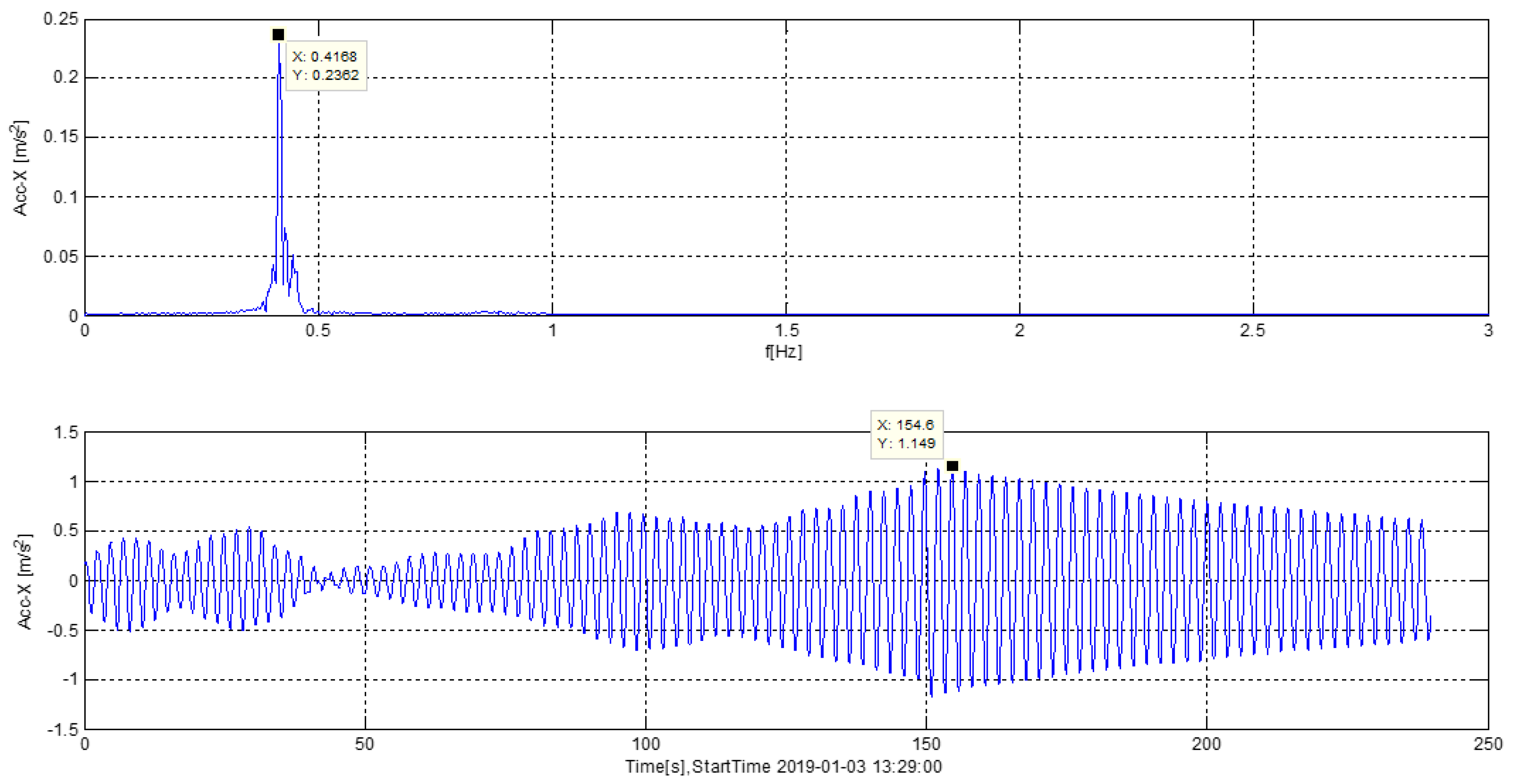
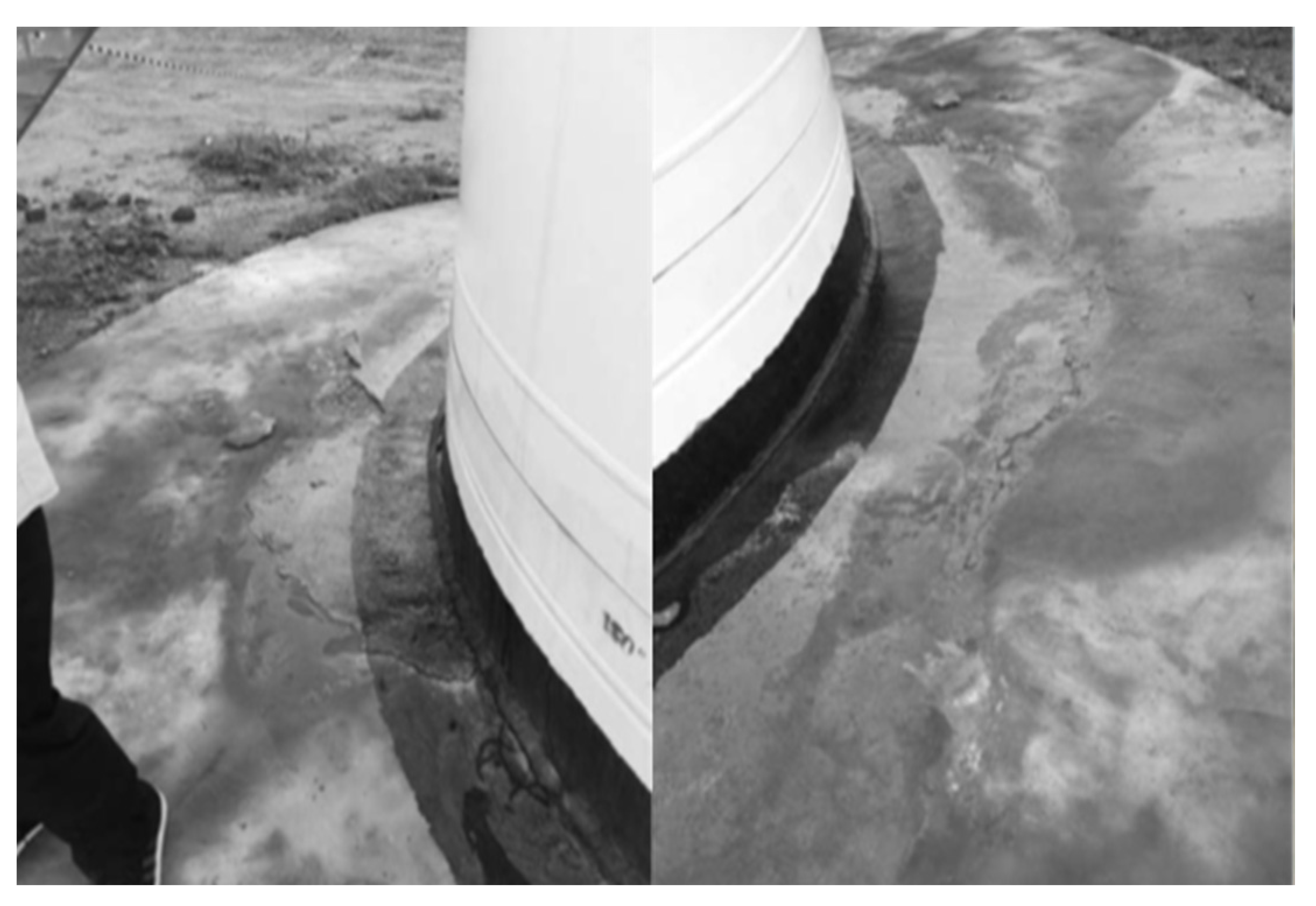
| S. No | Fault | 1 | 2 | … | k | … | 31 |
|---|---|---|---|---|---|---|---|
| 1 | A | … | … | ||||
| 2 | B | … | … | ||||
| … | … | … | … | … | … | … | … |
| ... | … | … | |||||
| … | … | … | … | … | … | … | … |
| ... | … | … |
| Fault Level | Fault Level Definition | Grading Standard | Processing Department |
|---|---|---|---|
| 1 | Low risk level fault | Low frequency and short-term distribution | Engineering technology company’s site |
| 2 | Medium risk level fault | Lower frequency and short-term distribution | Engineering technology company’s operation and maintenance center |
| 3 | Common fault with higher risk level | Higher frequency and longer-term distribution | Technical department and responsible leader |
| 4 | Common fault with high risk level | High frequency and long-term distribution | R&D center and responsible leader |
| S. No. | Fault Category | Date_1 | Date_2 | … | Date_30 | Date_31 | Fault Number | Days Triggered |
|---|---|---|---|---|---|---|---|---|
| 1 | Normal rotor speed shutdown fault | 122 | 105 | … | 0 | 0 | 641 | 17 |
| 2 | Station 20 communication failure | 255 | 123 | … | 0 | 0 | 399 | 4 |
| 3 | Station communication failure | 315 | 2 | … | 0 | 0 | 319 | 3 |
| 4 | Hydraulic system pressure high fault | 35 | 32 | … | 2 | 0 | 254 | 30 |
| … | … | … | … | … | … | … | … | … |
| 19 | Motor cooling water pump pressure fault | 39 | 15 | … | 0 | 0 | 98 | 9 |
| … | … | … | … | … | … | … | … | … |
| 33 | Three-phase voltage unbalance fault | 6 | 5 | … | 0 | 0 | 49 | 14 |
| … | … | … | … | … | … | … | … | … |
| 222 | Tower foundation ups400 v power supply failure | 1 | 0 | … | 0 | 0 | 1 | 1 |
| S. No. | a | b | Error Rate c |
|---|---|---|---|
| 1 | 0.3 | 0.1 | 0.135135 |
| 2 | 0.4 | 0.1 | 0.130631 |
| 3 | 0.7 | 0.2 | 0.130631 |
| … | … | … | … |
| 65 | 2.0 | 0.1 | 0.211712 |
| 66 | 2.0 | 0.2 | 0.216216 |
| Name | Quadratic Fitting | Cubic Fitting | Quartic Fitting |
|---|---|---|---|
| SSE: | 0.007364 | 0.00499 | 0.003037 |
| R-square: | 0.9294 | 0.9521 | 0.9709 |
| Adjusted R-square: | 0.9235 | 0.9444 | 0.9629 |
| RMSE: | 0.01108 | 0.009439 | 0.007716 |
| Algorithm | Total Number of Samples | Number of Misclassified Samples | Accuracy |
|---|---|---|---|
| K-means algorithm of weight parameter optimization | 71 | 1 | 98.59% |
| Neural network algorithm | 71 | 7 | 90.14% |
| Classical K-means algorithm | 71 | 9 | 87.32% |
Publisher’s Note: MDPI stays neutral with regard to jurisdictional claims in published maps and institutional affiliations. |
© 2022 by the authors. Licensee MDPI, Basel, Switzerland. This article is an open access article distributed under the terms and conditions of the Creative Commons Attribution (CC BY) license (https://creativecommons.org/licenses/by/4.0/).
Share and Cite
Ren, L.; Yong, B. Wind Turbines Fault Classification Treatment Method. Symmetry 2022, 14, 688. https://doi.org/10.3390/sym14040688
Ren L, Yong B. Wind Turbines Fault Classification Treatment Method. Symmetry. 2022; 14(4):688. https://doi.org/10.3390/sym14040688
Chicago/Turabian StyleRen, Liying, and Bin Yong. 2022. "Wind Turbines Fault Classification Treatment Method" Symmetry 14, no. 4: 688. https://doi.org/10.3390/sym14040688





